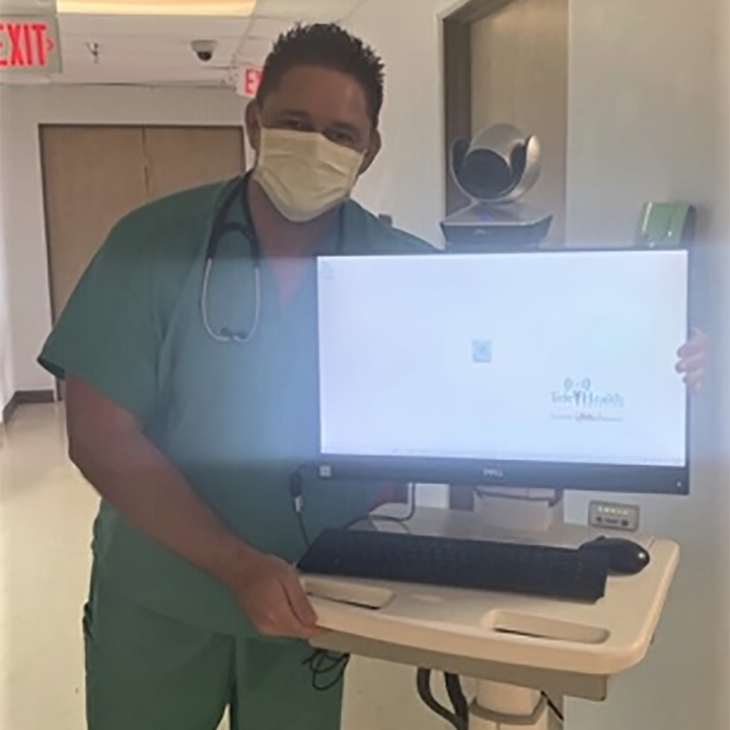HealthLeaders interviewed Rhett Stover, OSU Medicine’s CEO about their telemedicine program to deliver care to rural patients through their Critical Access Hospital netowork.
As the first wave of COVID-19 hit Oklahoma, 20 rural sites were able to connect within 120 days to a newly-built statewide network for telemedicine and hospitalist-based services through the Oklahoma State University Medical Center, part of OSU Medicine.
“We were working in close concert with 20 critical access hospitals across the state and embedding a hospitalist service that allowed them to expand their clinical capabilities and their clinical expertise for the purposes of providing an enhanced level of care locally, up to and including the care and treatment of COVID patients in their community, when and where appropriate,” says Rhett Stover, MHA, FACHE, OSU Medicine’s chief executive officer.
As part of the telehospitalist program, OSU Medicine deployed AGNES Connect, a cart-based platform from AMD Global Telemedicine that enables OSU Medicine-contracted hospitalists to connect through video conferencing to the on-site clinician, and to perform a medical assessment on the patient. On-site physicians capture medical device data, including from digital stethoscopes, a 12-lead EKG, and pulse oximeters, that is streamed in real time through AGNES Connect to OSU Medicine hospitalists.
“AMD was able to get us roughly 50, 55 carts in six weeks,” Stover says. “That was not a small effort. They’ve been a great partner” through various supply chain shortages impacting the availability of technological components.
AGNES also connects with each of the rural critical access hospital’s electronic health records, expediting continuity of care as patients move from emergency departments into inpatient settings, Stover says.
The success of OSU Medicine’s program also rests upon providing personalized care teams to these rural patients, Stover says. This was enabled by a partnership between OSU Medicine and TeleHealth Solution, which provided telehospitalists for rural patients with rounding, admission, and care coordination for rural healthcare markets across the state.
Read the full article in HealthLeaders





